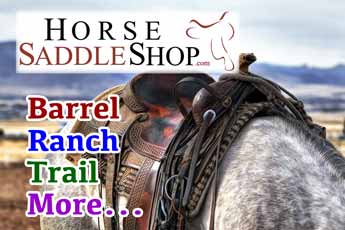Cowboy Dictionary - Letters F-G
Feathers - On horses, the word feathers refers to the long hairs on the back of the lower legs. Not all horses have feathers. Feathers are a common characteristic of draft horses.
Horses that have feathers also commonly have "spats," which are long hairs that hang down over the hooves.
Below: The blue arrows are pointing to feathers, and the red arrows are pointing to spats.
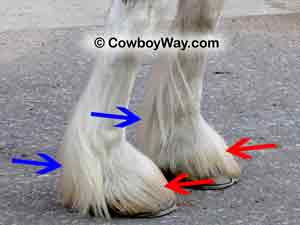
Felt - Felt is a dense collection of short, single animal fibers pressed together with hot water and steam so that they interlock.
Felt is a fabric but it is much stronger than woven fabrics because with felt each individual fiber is interlocked with other fibers in several different directions.
Woven fabrics, on the other hand, are made from fibers that are first twisted into threads. When the threads are woven together the result is a fabric that can be torn apart in a straight line. Felt does not have this inherent weakness.
Felt makes a superior fabric for a cowboy hat because it is much harder to tear or damage than other fabrics, is naturally water resistant, and is light weight.
You can shop for felt saddle pads here.
Filly - A filly is a young female horse, 4 years old or younger.
Advertisement - Article continues below.
Flehmen Response - The flehmen response is a posture exhibited by some mammals when they encounter certain smells. The flehmen response is recognized by a raised, extended neck and head, along with a raising and curling of the upper lip.
We have more information about the flehmen response.
Below: A horse exhibiting the flehmen response.
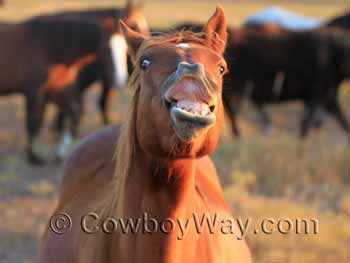
Float - The word float can be both a noun and a verb. It can refer to the tool used to rasp a horse's teeth, or it can refer to the rasping itself.
Floating a horse's teeth means to file or rasp their teeth to make the chewing surfaces relatively flat or smooth. The type of file used for this is called a "float," which is where the procedure gets its name.
Below: A tooth file, or float.
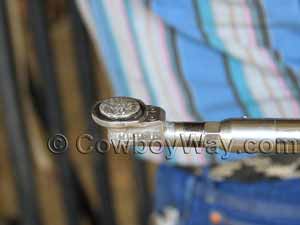
Foal - A newborn or very young horse, male or female.
Forelock - The hair that grows between a horse's ears and/or at the very top of the mane. Forelocks hang forward over the front of a horse's face, across the forehead.
Some horses grow long, thick, forelocks while others grow thin, sparse ones. Forelocks can be very useful to a horse to help it fight flies and other biting insects.
Below: A horse with a long, thick, forelock.
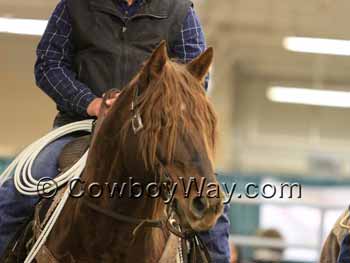
Fork / Saddle Fork - The fork of a Western saddle is also commonly called the swells or the pommel. It is the part of the saddle underneath the saddle horn. We have more information about the parts of a Western saddle.
Below: The yellow arrow is pointing to the fork of a saddle.

Freeze Brand - A brand is permanent mark on the hide of an animal, and is used for identification of ownership. A freeze brand is made by using a very cold branding iron (as apposed to a hot brand which uses a hot branding iron).
The process of freeze branding uses extreme cold to kill the cells in the animal's skin that produce pigmentation, or color. Therefore, a freeze branded animal will have white hair where the freeze branding iron touched the skin.
For more information about freeze brands, please see our articles What Is Freeze Branding? and Freeze Branding Horses.
Below: A freeze brand on the right hip of a horse.
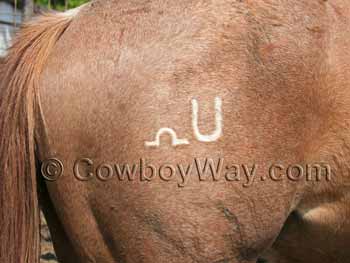
Gelding - A male horse that has been castrated, or gelded.
Green Broke - A horse that is trained to be ridden, but that is inexperienced and whose training is not yet complete. For example: "That's a nice horse, but he's just green broke," or "He's coming along well, but he's still pretty green."
Definitions
… Letter C
… Letter S
… Letter T
You Might Also Like
